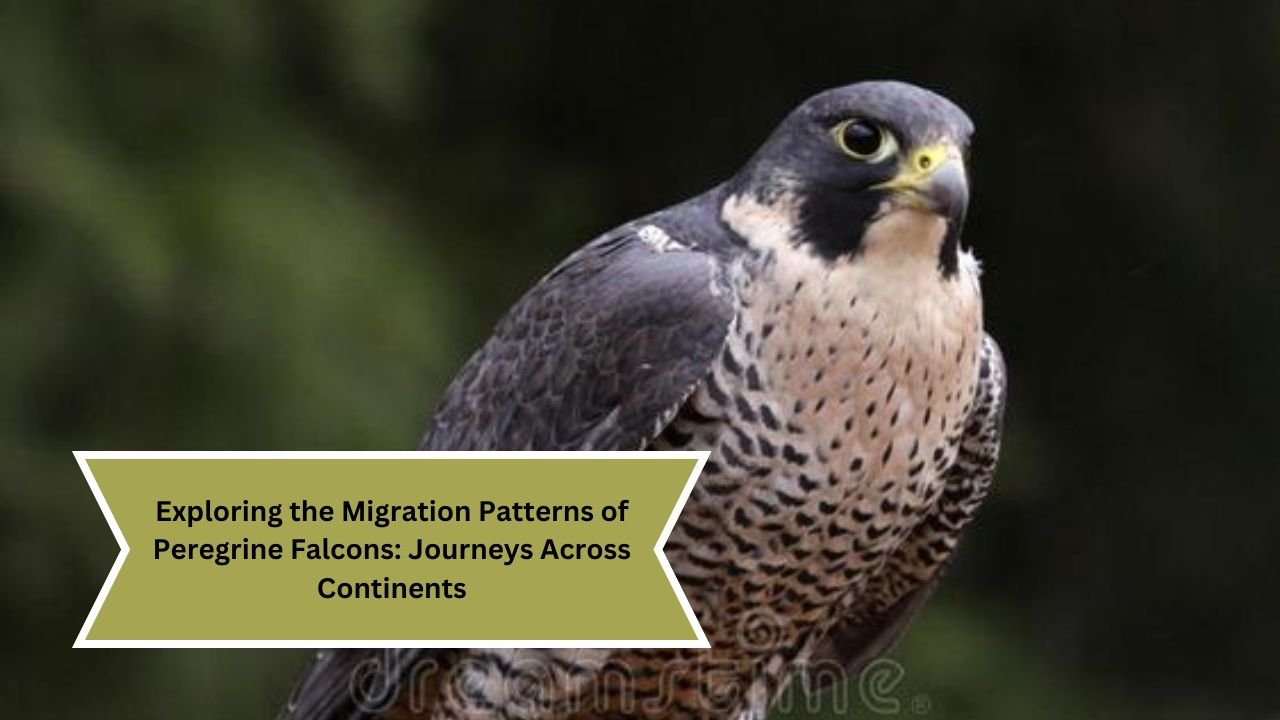The peregrine falcon, renowned as the fastest bird in the world, captivates birdwatchers and ornithologists alike with its remarkable speed and agile flight. However, what truly sets this bird apart is its incredible migratory behavior. Each year, these majestic raptors embark on long-distance journeys that span continents, showcasing not only their endurance but also their adaptability to changing environments. In this article, we will explore the migration patterns of peregrine falcons, shedding light on their routes, the challenges they face, and the conservation efforts aimed at preserving their habitats.
Understanding Peregrine Falcons
Peregrine falcons (Falco peregrinus) are medium-sized birds of prey characterized by their distinctive blue-gray feathers, black cap, and striking yellow facial markings. They are found on every continent except Antarctica, thriving in various habitats, including urban areas, mountains, and coastal regions. Their adaptability and hunting prowess make them successful predators, primarily preying on birds in mid-flight. The typical adult peregrine measures between 15 to 20 inches in length with a wingspan of 3.3 to 3.6 feet, allowing for swift and agile maneuvers.
The Migration Journey
1. Migration Timing
Peregrine falcons exhibit a distinct migratory pattern that varies by geographic location. Generally, the migration season occurs in the fall and spring, coinciding with the changing seasons. In North America, for instance, peregrines begin their southward migration in late August to early September, traveling to their wintering grounds in Central and South America. In the spring, they return to their breeding territories from March to May, coinciding with the availability of nesting sites and prey.
2. Migration Routes
Peregrine falcons undertake impressive migratory journeys that can span thousands of miles. The migration routes are influenced by various factors, including breeding locations, environmental conditions, and availability of food sources. Some of the key migration routes include:
- North America: Peregrines breeding in the northern parts of Canada and the northern United States typically migrate south along the eastern and western coasts, utilizing thermals and favorable wind currents. This migration can cover distances ranging from 1,000 to over 5,000 miles.
- Eurasia: In Europe and Asia, peregrine falcons follow diverse migratory paths, depending on their breeding sites. Some migrate through the Mediterranean, while others traverse the central Asian steppes.
- Africa: Peregrines that breed in northern Africa often migrate southward to regions in sub-Saharan Africa, taking advantage of the abundant prey during the winter months.
3. Stopover Sites
During their migratory journeys, peregrine falcons rely on specific stopover sites to rest and refuel. These areas are crucial for their survival, providing essential resources such as food, shelter, and safe nesting sites. Common stopover locations include:
- Wetlands and Coastal Areas: Rich in biodiversity, these environments offer a variety of prey species, including shorebirds and small mammals.
- Mountain Ranges: High-altitude regions provide thermals that help falcons conserve energy during their migration.
- Urban Areas: Surprisingly, peregrines have adapted well to urban environments, often using tall buildings as nesting sites and hunting grounds.
Challenges Faced During Migration
While peregrine falcons are skilled navigators and hunters, their migratory journeys are fraught with challenges. Understanding these threats is essential for conservation efforts.
1. Habitat Loss
One of the most significant challenges facing peregrine falcons is habitat loss due to urbanization, agriculture, and industrial development. The destruction of nesting sites and hunting grounds can negatively impact their populations.
2. Climate Change
Changing climate patterns can alter migratory routes and breeding timings. Extreme weather events, such as storms and droughts, can affect prey availability and disrupt the falcons’ feeding patterns during migration.
3. Pollution
Chemical pollutants, particularly pesticides, can have dire consequences for peregrine falcons. These substances accumulate in the food chain and can lead to decreased reproductive success and weakened immune systems.
4. Human Interference
Collisions with buildings, power lines, and vehicles pose significant risks during migration. As peregrine falcons navigate urban landscapes, they face increased hazards that can result in injury or death.
Conservation Efforts
Recognizing the challenges faced by peregrine falcons, various conservation initiatives have been implemented to protect their populations and habitats. Some notable efforts include:
1. Nesting Site Protection
Many organizations and governmental agencies work to safeguard critical nesting sites. This includes monitoring breeding pairs and ensuring that their habitats are preserved from development and disturbance.
2. Legislation
In the United States, peregrine falcons were listed as endangered under the Endangered Species Act in the 1970s due to drastic population declines. Legal protections have been instrumental in facilitating recovery efforts, and in 1999, they were removed from the endangered species list. Similar protections exist in other countries, promoting the conservation of their habitats.
3. Public Awareness Campaigns
Educational initiatives aim to raise awareness about the importance of peregrine falcons and the challenges they face. Engaging communities in conservation efforts fosters a greater understanding of these birds and encourages support for habitat protection.
4. Research and Monitoring
Ongoing research plays a crucial role in understanding peregrine falcon migration patterns and population dynamics. Banding programs and satellite tracking provide valuable data on their movements, allowing scientists to assess their needs and identify critical habitats for conservation.
Conclusion
The migratory journeys of peregrine falcons exemplify the resilience and adaptability of these magnificent birds. From their breathtaking flights across continents to the challenges they face, peregrines are a testament to the power of nature. By understanding their migration patterns and supporting conservation efforts, we can ensure that future generations continue to witness the beauty of peregrine falcons in the skies above. Their remarkable journeys are not just a spectacle; they are a reminder of the interconnectedness of ecosystems and the importance of preserving our natural world. Whether soaring over urban landscapes or nesting on remote cliffs, peregrine falcons remain an enduring symbol of wildlife resilience.
| HOME | CLICK HERE |
| PEREGRINE | CLICK HERE |

